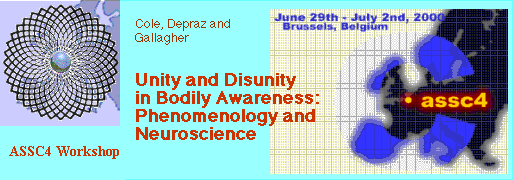

Home - 1 - 2 - 3 - 4 - 5 - 6 - 7 - 8 - 9 - 10 - 11 - 12 - 13 - 14- Bibliography
11. Three Theories of Gesture
|
Motor Theory of Gesture
Consider: Gesture in cases of aplasic phantom limbs Phantom limb in cases of congenital absence of limb is in part the result of innate body schema (Gallagher, Butterworth, Lew, and Cole, 1998) --so gesturing aplasic phantoms may be consistent with motor theory. Ramachandran (1998) reports the following conversation with subject who has aplasic phantoms: M: "Well, because as Iım talking to you, they are gesticulating. They point to objects when I point to things."
But consider Ramachandranıs patient again: |
In relation to the experiments with IW this would mean that
IW's gesturing is not consciously controlled, but is nonconsciously integrated with linguistic behavior; controlled by factors that go beyond ordinary sensory-motor control.
Gestures in congenitally blind Iverson and Goldin-Meadow (1998)
Merleau-Ponty suggests that speech accomplishes thought. The experiments on gesture in the congenitally blind suggest that gesture too accomplishes thought (gesturing is a part of language that linguistic subjects need for their own linguistic-thought processes, and not just for communicative purposes). |
 ... Enactive Theory of Gesture...
... Enactive Theory of Gesture...
-- Embodied-Motor Aspects: On-going feedback (body schema in normal case; visual body image for Ian) gives motor system a sense of where limbs are for purpose of topokinesic control.
(2) Language and cognition return to the body through gesture; they make the body move in certain ways. It is another person like myself who motivates, and mediates this process. To say that language moves my body is already to say that other people move me.
Home - 1 - 2 - 3 - 4 - 5 - 6 - 7 - 8 - 9 - 10 - 11 - 12 - 13 - 14- Bibliography